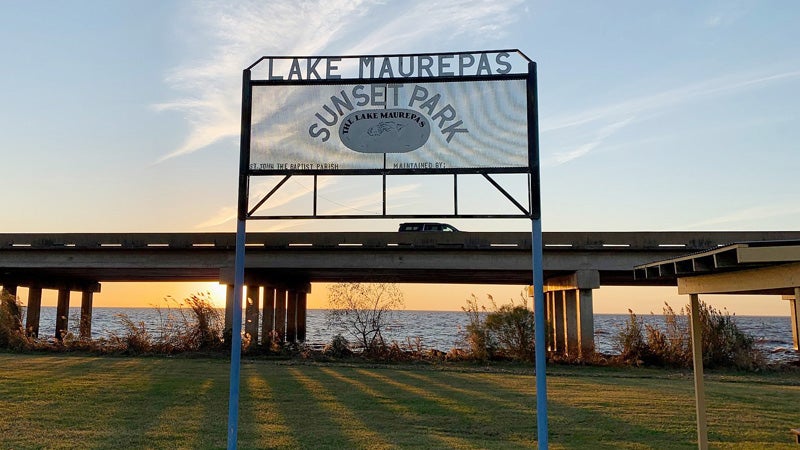Hurricanes highlight importance of coastal restoration
Published 8:30 am Saturday, August 29, 2020
|
Getting your Trinity Audio player ready...
|
LAPLACE — Hurricane Laura spared the River Parishes, but it provided a frightful reminder of the importance of restoring the Louisiana coast.
Well-constructed levee systems and natural wetlands must work in tandem to provide critical storm surge protection, according to Dr. John Lopez, director of Pontchartrain Conservancy’s Coast & Community Program and a coastal scientist for Restore the Mississippi River Delta.
The last week of August has proved devastating for Southeast Louisiana. Fifteen years have passed since more than 1,200 New Orleans residents lost their lives to citywide flooding that resulted from a levee failure. Eight years ago, much of St. John the Baptist Parish was submerged underwater from slow-moving Hurricane Isaac’s storm surge and massive amounts of rainfall.
New Orleans received an upgraded levee system and a new hurricane surge barrier. Surrounding communities are still waiting for storm protection infrastructure.
“Communities outside the levee system in this area are, for the most part, dependent on home elevation. In terms of levee improvements outside of the Greater New Orleans area, the biggest one is something that’s in progress right now, and that’s the West Shore Levee on the West side of Lake Pontchartrain,” Dr. Lopez said. “We’ve supported that levee from the beginning, and we’re glad to see it being built. Some levees are built in the wrong location and might make things worse by causing a lot of damage to wetlands. In this case, we think there was a reasonable tradeoff. There is some impact to the swamps here, but we think that was minimized for the most part and done in a way that is supportive of the wetlands.”

The Lake Maurepas Sunset Park provides beautiful views on the isthmus of land separating Lake Maurepas from Lake Pontchartrain.Photo credit: Manchac Greenway.
While some people refer to large areas of swamp and cypress trees as “horizontal levees,” they are not perfect barriers to water. Yet, swamplands are very beneficial at providing resistance to water, which in turn benefits levee systems.
“They are very effective at slowing the currents down and ultimately reducing the surge levels,” Dr. Lopez said. “For the most part, the levees around southeast Louisiana are earthen levees that can’t take severe wave attacks. These trees can be vital to maintaining the integrity of the levee.”
One of the previous alignments of the West Shore Levee System would have put a lot of swamp inside this levee, thereby cutting it off from the coast and sacrificing the benefit of the trees. This was later adjusted, and the final alignment has placed most of the surrounding swampland outside of the levee system.
“Levees protect the communities, but we need our coast to protect our levees,” Dr. Lopez said. “The public should be aware of where the wetlands are and knowledgeable of why they are important. They should convey that to their pubic officials.”
There are several local projects in the works to protect Louisiana’s coast.
The Lake Pontchartrain Shoreline Protection Project acknowledges that Lake Pontchartrain’s shorelines have been retreating under the combined impacts of logging, soft soils and wind-driven waves. To reduce the impacts of erosion, St. John Parish will have breakwaters at two locations in Lake Pontchartrain, one south of Pass Manchac and another south of Frenier Landing.
HDR Engineering has finished 15 percent of the preliminary design, and an overview of the project design can be viewed at http://sjbparish.com/pdfs/CZMAC%20August%20Newsletter.pdf.
In February 2020, the RESTORE Council voted to approve funding for the River Reintroduction Into Maurepas Swamp project, which would provide sediment and fresh water to existing wetlands in East Maurepas swamp.
Greg “Za” Maurin is a new appointee to the St. John Parish Coastal Zone Management Advisory Committee and president of Friends of the Manchac Greenway.
“Our main purpose with the Manchac Greenway is to try to preserve the integrity of the land isthmus from LaPlace to Ponchatoula, that little strip where Old 51 passes,” Maurin said.
Early this week, easterly winds from Hurricane Laura covered part of the low road with lake water. Maurin said the Manchac Greenway volunteers are planting trees along the isthmus and working with DOTD to make sure drainage culverts along the road stay clean.
Also in progress are projects that will help St. John the Baptist Parish direct community development in a way that supports storm water drainage.
The LA Safe proposal includes green spaces optimized for water absorption in addition to pedestrian and cyclist paths, permeable parking and shade trees. The design phase is 95 percent complete, and the project will go out for bid within the next few months, according to an August 2020 newsletter from the Coastal Zone Management Advisory Committee.
Committee member Ivy Mathieu said learning to live with Mother Nature will help preserve the “Sportsman’s Paradise” way of life that has become part of the backbone of Louisiana culture.
Mathieu is also concerned with future land development in St. John Parish. She wants the public and homebuilders to be better educated on policies for smart land use to avoid harming natural flood protective resources.
“St. John residents and elected officials must become good and smart stewards of the land, air and water. Elected officials have the added responsibility of resiliency and sustainable policies, practices and laws to ensure a healthy future,” Mathieu said.
Those who would like to contribute to coastal preservation can reach out to the Pontchartrain Conservatory by calling 504-836-2215 or by emailing info@scienceforourcoast.org.





